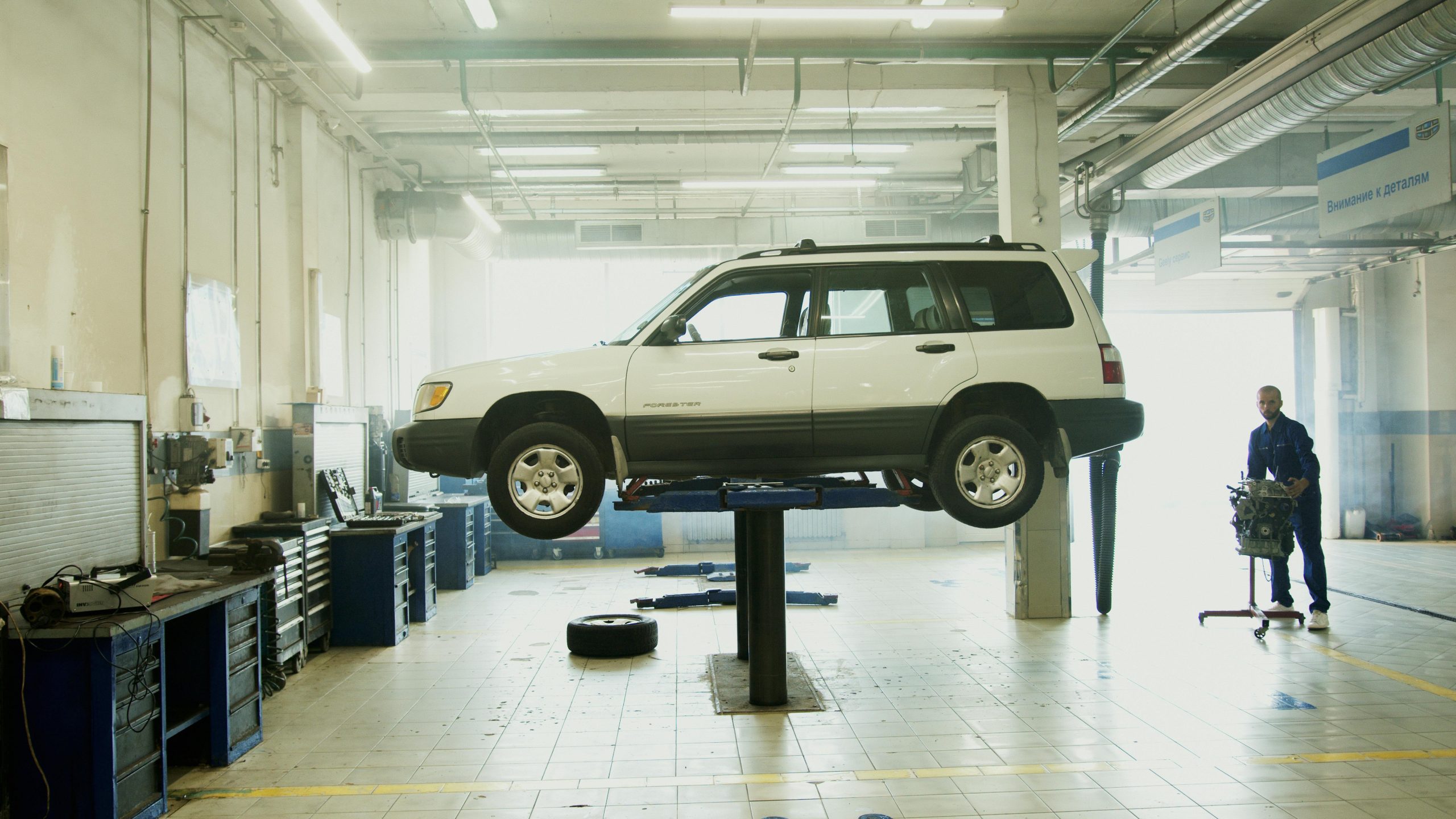- Car repair warranties cover mechanical or electrical breakdowns—not accidents, wear-and-tear, or routine maintenance.
- Factory warranties typically include bumper-to-bumper and powertrain coverage, while extended warranties vary widely in quality and scope.
- Always read the fine print to understand what’s included, what’s excluded, and what documentation you’ll need to make a claim.
- Routine service by independent mechanics will not void your warranty, thanks to the Magnuson-Moss Warranty Act, as long as proper parts and records are maintained.
- Watch out for red flags with extended warranties—especially high-pressure sales tactics and unclear terms from third-party providers.
- Keep maintenance records, follow service schedules, and get pre-approval for repairs to ensure your claims aren’t denied.

Car repairs can be expensive, and if you’ve ever had a major issue like a blown transmission or a failed air conditioning system, you know just how costly things can get. That’s where a car repair warranty comes in. But not all warranties are created equal, and many car owners aren’t sure what’s actually covered, what isn’t, or when a warranty kicks in. Understanding how car repair warranties work can save you time, money, and stress.
In this article, we’ll break down the types of warranties available, what they typically cover, what they exclude, and how to file a claim if needed. Whether you’re buying a new vehicle, considering an extended warranty, or dealing with a surprise repair, this guide will help you make informed decisions.
- What Is a Car Repair Warranty?
- Main Types of Car Repair Warranties
- What’s Usually Covered in a Repair Warranty
- What’s Not Covered (Common Exclusions)
- How to File a Repair Warranty Claim
- Dealer vs. Independent Repair Shops: Does It Affect Warranty?
- Red Flags in Extended Warranty Offers
- Tips to Get the Most Out of Your Warranty
- Conclusion
What Is a Car Repair Warranty?
A car repair warranty is a guarantee provided by a manufacturer or third-party provider that covers specific mechanical or electrical problems with your vehicle. If a covered part breaks down or malfunctions during the warranty period, the warranty provider pays for the repair, often covering both parts and labor.
Warranties aren’t the same as insurance. While auto insurance covers damage due to accidents, theft, or weather, a warranty focuses on mechanical failures and manufacturing defects.
There are three main types of car repair warranties:
- Factory (Manufacturer) Warranty
- Extended Warranty (also called a Vehicle Service Contract)
- Certified Pre-Owned (CPO) Warranty
Main Types of Car Repair Warranties
1. Factory (Manufacturer) Warranty
This is the original warranty that comes with a new vehicle. It’s typically split into two main parts:
- Bumper-to-Bumper Warranty: Covers almost everything from front to back, except wear-and-tear items like brake pads and tires. Usually lasts 3 years or 36,000 miles.
- Powertrain Warranty: Covers the engine, transmission, and drivetrain. It often lasts longer than bumper-to-bumper coverage, such as 5 years or 60,000 miles.
Other factory warranties may include:
- Emissions Warranty (federally mandated, usually longer)
- Corrosion/Rust-Through Warranty
- Hybrid Component Warranty (for hybrid/electric vehicles)
Factory warranties usually require that you follow scheduled maintenance guidelines to remain valid.
2. Extended Warranty
An extended warranty is optional coverage that kicks in after the factory warranty expires. It can be purchased from the manufacturer, dealership, or a third-party provider. These warranties are actually service contracts and come in different levels:
- Powertrain Coverage: Covers essential components like engine, transmission, and drivetrain.
- Mid-Level Coverage: Adds coverage for more electrical and mechanical components.
- Comprehensive (Bumper-to-Bumper) Coverage: Includes nearly everything, similar to the original factory warranty.
Extended warranties may also include benefits such as:
- Roadside assistance
- Rental car reimbursement
- Trip interruption protection
Important things to know about extended warranties:
- They vary widely in cost, coverage, and reliability.
- Some require repairs to be done at specific shops.
- Not all are backed by manufacturers; some third-party providers have poor reputations.
3. Certified Pre-Owned (CPO) Warranty
When you buy a certified pre-owned vehicle from a dealership, it often includes a limited warranty backed by the manufacturer. These warranties typically include:
- Remainder of the original factory warranty
- Additional CPO coverage (powertrain or bumper-to-bumper)
- Inspection and reconditioning before sale
CPO warranties are generally more trustworthy than third-party used car warranties and are tied to a specific set of standards.
What’s Usually Covered in a Repair Warranty
Car repair warranties are designed to protect you from the financial burden of unexpected mechanical failures. Common components covered include:
Mechanical Components:
- Engine (gaskets, oil pump, water pump, timing chain)
- Transmission and transfer case
- Drivetrain and axle shafts
- Cooling system (radiator, fan motor)
- Fuel system (fuel pump, injectors)
Electrical Systems:
- Alternator
- Starter motor
- Power window motors
- Ignition system
- Onboard computer modules (in comprehensive warranties)
Climate Control:
- Air conditioning compressor
- Heater core
- Blower motor
Additional Coverage in Some Plans:
- GPS/navigation systems
- Backup cameras and sensors
- Sunroof mechanisms
Most warranties also cover the labor costs associated with replacing the covered parts, but labor rates are often capped.
What’s Not Covered (Common Exclusions)
Knowing what isn’t covered is just as important. Many car owners are surprised when a warranty claim is denied because the issue falls under a common exclusion. These typically include:
Wear-and-Tear Items:
- Brake pads and rotors
- Tires
- Windshield wipers
- Headlights and bulbs
- Clutch assemblies
Routine Maintenance:
- Oil changes
- Air and cabin filters
- Spark plugs
- Fluid top-offs
- Tire rotations and alignments
Cosmetic Issues:
- Paint chips and scratches
- Upholstery tears
- Interior trim damage
Other Exclusions:
- Damage from lack of maintenance
- Accidents or environmental damage (covered by insurance instead)
- Unauthorized repairs or aftermarket modifications
- Pre-existing conditions before warranty purchase
Always read the fine print to understand the limits of your specific warranty.
How to File a Repair Warranty Claim

Filing a warranty claim doesn’t have to be difficult, but it requires the right steps:
- Review Your Warranty Terms
- Make sure the issue is covered.
- Check mileage and time limits.
- Contact the Warranty Provider or Dealership
- Some require pre-approval before repairs begin.
- Ask if they have a preferred repair facility.
- Get a Diagnosis
- A repair shop will inspect the vehicle and write a diagnosis.
- Share this with the warranty provider.
- Provide Documentation
- Keep your maintenance records (oil changes, tune-ups, etc.).
- Submit the repair estimate, photos (if needed), and service receipts.
- Get Repairs Authorized
- Never let the shop start work until you get approval.
- Unauthorized repairs may not be reimbursed.
- Pay Any Deductibles
- Some warranties have a per-visit or per-item deductible.
- Follow Up on Reimbursement (if applicable)
- Some third-party plans may require you to pay upfront and file for reimbursement.
Dealer vs. Independent Repair Shops: Does It Affect Warranty?
A common myth is that you must go to the dealership to maintain your warranty. Thanks to the Magnuson-Moss Warranty Act, that’s not true.
You can go to any qualified mechanic for routine service and still keep your warranty valid — as long as:
- The work is performed correctly
- OEM or equivalent parts are used
- You keep all service records
However, some extended warranties or service contracts do require you to use their approved repair networks. If you use an out-of-network shop, you may not be covered.
When in doubt:
- Call your provider
- Ask for a list of authorized shops
- Keep receipts and document repairs
Red Flags in Extended Warranty Offers
Not all extended warranties are worth it. Some are overpriced, hard to use, or nearly impossible to claim from. Here are red flags to watch for:
- High-pressure sales tactics
- Unclear contract terms or exclusions buried in fine print
- Lack of contact info or customer service support
- Companies with poor BBB or Trustpilot ratings
- Coverage that sounds too good to be true (e.g., “lifetime bumper-to-bumper” for used vehicles)
Before buying:
- Read online reviews
- Ask for a sample contract
- Check refund policies and cancellation options
Tips to Get the Most Out of Your Warranty
To maximize your warranty protection:
- Keep Maintenance Records: Oil changes, inspections, and repairs should all be documented.
- Follow the Maintenance Schedule: Use your owner’s manual to stay on track.
- Report Issues Promptly: Don’t wait until a problem worsens.
- Use Authorized Shops: Especially for extended warranties.
- Ask Questions: Don’t be afraid to clarify what is and isn’t covered.
- Save All Receipts: Including parts, labor, and diagnostic fees.
Conclusion
Understanding your car repair warranty is essential for protecting both your wallet and your peace of mind. Whether you’re covered under a factory warranty, considering an extended plan, or navigating a recent breakdown, knowing what’s covered (and what’s not) can help you make smarter choices.
Always take the time to read the fine print, ask questions, and keep good records. A little preparation goes a long way when it comes to keeping your car in top shape without unnecessary repair bills.
Before you sign up for any warranty plan, know your options—because not every warranty is worth the price. But the right one? It could save you thousands.
